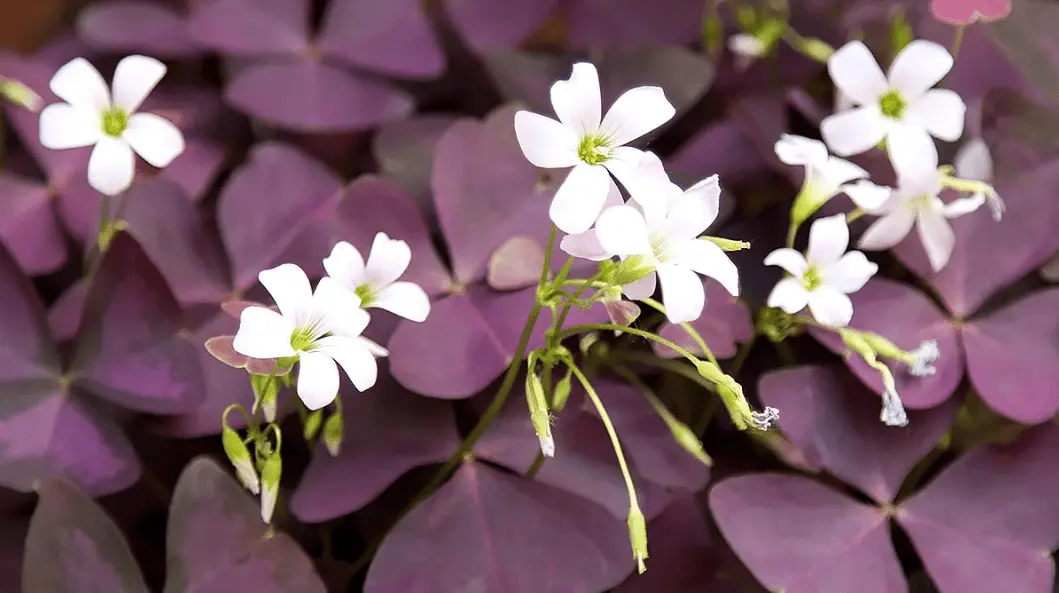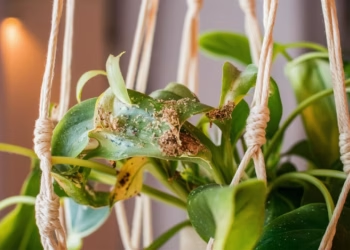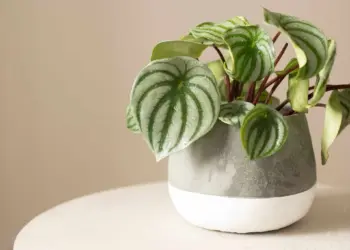Welcome, plant enthusiasts, to the ultimate indoor gardening adventure! In this comprehensive guide, we’re diving deep into the enchanting world of the Purple Shamrock Plant. Renowned for its striking foliage and captivating charm, the Purple Shamrock is a delightful addition to any indoor space. But fear not, for caring for this botanical beauty is easier than you might think!
Whether you’re a seasoned green thumb or a novice plant parent, this INDOOR GUIDE is your go-to resource for all things Purple Shamrock. From optimal lighting conditions to watering techniques, we’ve got you covered. So, grab your gardening gloves and let’s embark on this journey together!
Unveiling the Purple Shamrock: A Brief Introduction
Before we delve into the nitty-gritty of care, let’s take a moment to appreciate the allure of the Purple Shamrock Plant. Also known as Oxalis triangularis, this perennial plant hails from the woodlands of Brazil and thrives in warm, humid environments. Its distinctive three-leaf clover shape and vibrant purple hue make it a standout specimen in any collection.
But what truly sets the Purple Shamrock apart is its unique characteristic of “sleeping.” During the night or in low light conditions, the leaves of the plant fold downward, resembling a delicate umbrella seeking shelter. This mesmerizing behavior adds an extra layer of intrigue to an already captivating plant.
Now that we’ve acquainted ourselves with this botanical gem, it’s time to learn the secrets of successful Purple Shamrock care!

Creating the Perfect Habitat: Setting Up Your Indoor Garden
1. Choose the Right Location
- Bright, Indirect Light: Purple Shamrocks prefer bright, indirect sunlight. Place your plant near a south or west-facing window where it can soak up the sun’s rays without being exposed to direct sunlight, which can scorch its delicate leaves.
- Avoid Drafts: Keep your Purple Shamrock away from drafty areas, such as air vents or open windows. Drafts can cause stress to the plant and lead to leaf drop.
2. Select the Ideal Container
- Well-Draining Pot: Opt for a pot with drainage holes to prevent waterlogging, which can cause root rot. Terra cotta or ceramic pots are excellent choices as they allow for airflow to the roots.
- Room to Grow: Choose a container that provides ample space for your Purple Shamrock’s root system to spread out. As the plant grows, you may need to repot it into a larger container to accommodate its increasing size.
3. Potting Mix Matters
- Loose, Well-Draining Soil: Use a lightweight potting mix that retains moisture without becoming waterlogged. A blend of peat moss, perlite, and compost works well for Purple Shamrocks, providing the right balance of nutrients and aeration.
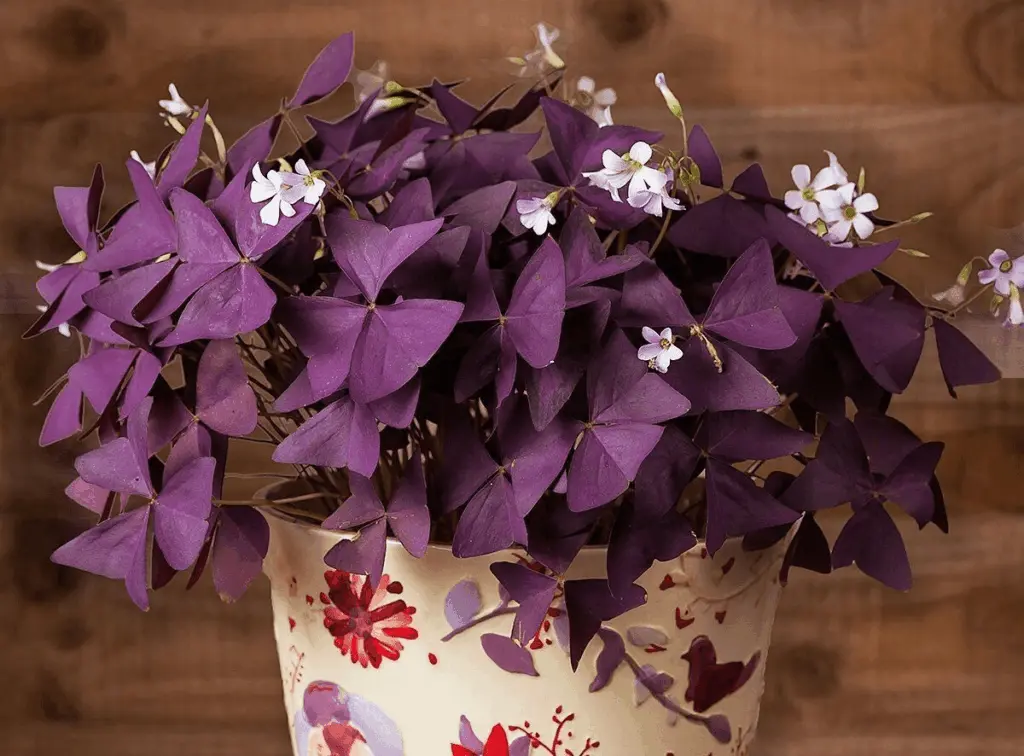
Nurturing Your Purple Shamrock: Care Tips and Techniques
Caring for your Purple Shamrock Plant is a rewarding experience that requires a combination of attention to detail and a touch of green-thumb intuition. Follow these essential care tips to ensure your plant stays healthy and happy:
1. Watering Wisely
- Moderation is Key: Purple Shamrocks prefer slightly moist soil but are susceptible to overwatering. Allow the top inch of soil to dry out between waterings, and then water thoroughly until water drains from the bottom of the pot.
- Watch for Signs of Stress: Drooping leaves or yellowing foliage can indicate both underwatering and overwatering. Adjust your watering frequency accordingly to maintain the ideal moisture balance.
2. Fertilize with Care
- Go Easy on the Fertilizer: Purple Shamrocks are light feeders and can be sensitive to fertilizer. Apply a balanced, water-soluble fertilizer diluted to half strength every 4-6 weeks during the growing season (spring and summer).
3. Pruning and Maintenance
- Remove Fading Flowers: As your Purple Shamrock blooms, pinch off spent flowers to encourage continuous blooming and prevent seed formation. This will redirect the plant’s energy into producing new foliage.
- Trim Leggy Growth: If your plant becomes leggy or sparse, prune back the stems to promote bushier growth and maintain a compact shape.
4. Combatting Pests and Diseases
- Stay Vigilant: Keep an eye out for common indoor plant pests such as aphids, spider mites, and mealybugs. If you spot any unwanted visitors, gently wash the leaves with a solution of mild soap and water to remove them.
- Preventive Measures: Maintain good air circulation around your Purple Shamrock and avoid overcrowding with other plants to minimize the risk of pest infestations and fungal diseases.

Propagation Made Simple: Harnessing the Power of Rhizomes
Propagation of Oxalis Triangularis presents an accessible endeavor for enthusiasts eager to expand their botanical collection. By dividing the plant’s rhizomes, you can effortlessly propagate new specimens. Simply separate the roots into smaller sections and transplant them into fresh soil, fostering a cycle of growth and renewal.
Styling Tips: Elevating Your Décor with Oxalis Triangularis
Enhance your living space with the aesthetic charm of Oxalis Triangularis by incorporating decorative pots or hanging baskets. Embrace the cascading foliage as it gracefully drapes over the container’s edges, adding a touch of natural elegance to any setting.
Addressing Common Concerns: Answering Your Queries with Precision
Is Oxalis Triangularis Pet-Friendly?
Regrettably, Oxalis Triangularis poses a potential hazard to pets if ingested, making it unsuitable for households with furry companions.
What Size Can I Expect?
Typically, Oxalis Triangularis exhibits dimensions of approximately W12cm x H15cm, providing a compact yet striking presence in your indoor oasis.
Congratulations, dear plant enthusiast, you’ve unlocked the secrets to successful Purple Shamrock care! By providing the right conditions and tender loving care, you’ll enjoy years of vibrant foliage and charming blooms from your Purple Shamrock Plant.
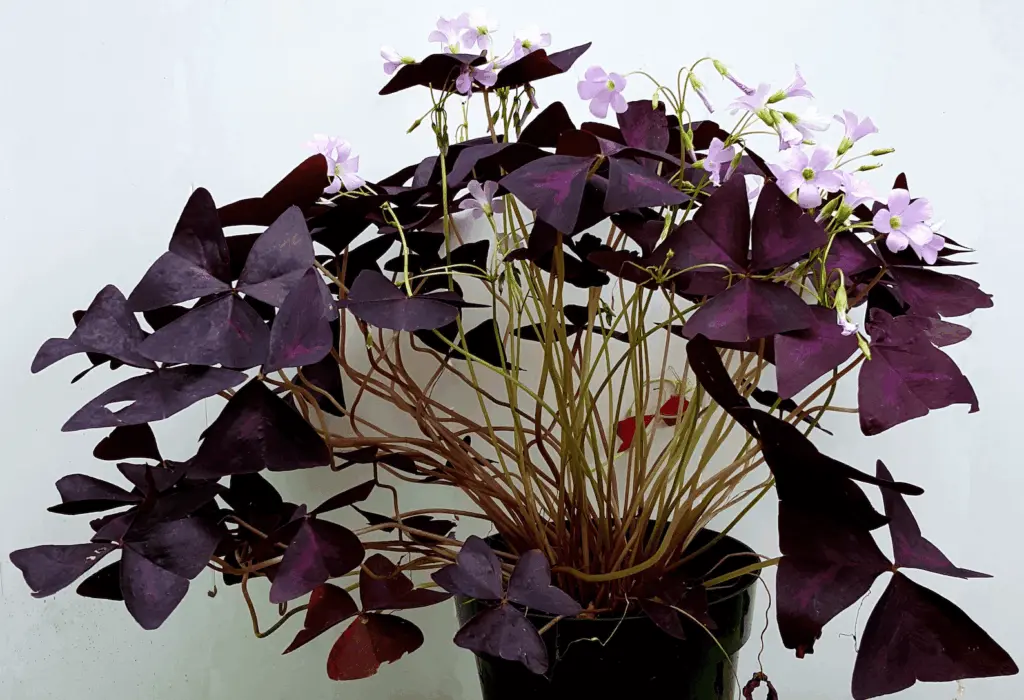
Remember, gardening is a journey filled with discoveries and delights. So, embrace the process, observe your plant’s behaviors, and revel in the joy of nurturing new life. With this INDOOR GUIDE as your trusted companion, your Purple Shamrock will flourish, becoming a cherished centerpiece in your indoor oasis. Happy gardening!
FAQs
Does purple shamrock like sun or shade?
Purple shamrock, also known as Oxalis triangularis, prefers bright, indirect light or partial shade. It can tolerate some direct sunlight, especially in the morning or late afternoon, but intense, prolonged sunlight may cause its leaves to scorch. Providing filtered light or placing it near a window where it receives ample indirect sunlight is ideal .
How to keep purple shamrock alive?
To keep purple shamrock alive, ensure it is planted in well-draining soil and water it when the top inch of soil feels dry to the touch. Avoid overwatering, as it can lead to root rot. Provide moderate humidity and maintain temperatures between 60-75°F (15-24°C). Fertilize sparingly during the growing season and repot annually to refresh the soil .
How often do you water purple Shamrocks?
Water purple shamrocks when the top inch of soil feels dry. Typically, this translates to watering every 7-10 days, but frequency may vary depending on factors such as temperature, humidity, and pot size. Always check the soil moisture before watering to prevent overwatering, which can lead to root rot .
Why is my purple shamrock dying?
Several factors could cause a purple shamrock to decline. Common issues include overwatering, which leads to root rot, insufficient light, pest infestations (such as spider mites or aphids), or environmental stress. Evaluate its care routine, including watering frequency, light exposure, and humidity levels, to identify potential issues and adjust accordingly .
How long do Shamrocks last?
With proper care, purple shamrocks can live for several years. They typically go dormant during the winter months, shedding their leaves and appearing dead. However, they will regrow in spring when provided with adequate light, water, and warmth. With consistent care and maintenance, shamrocks can persist for many years, occasionally requiring repotting and division to rejuvenate them .
